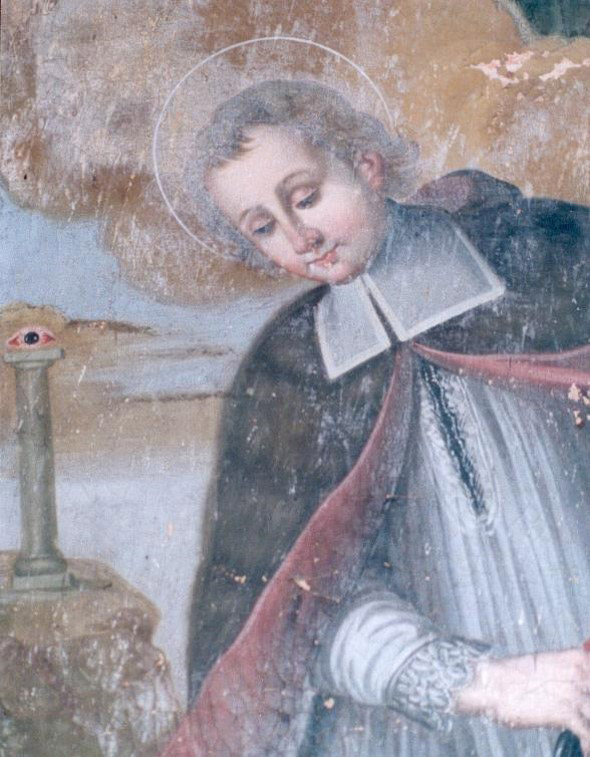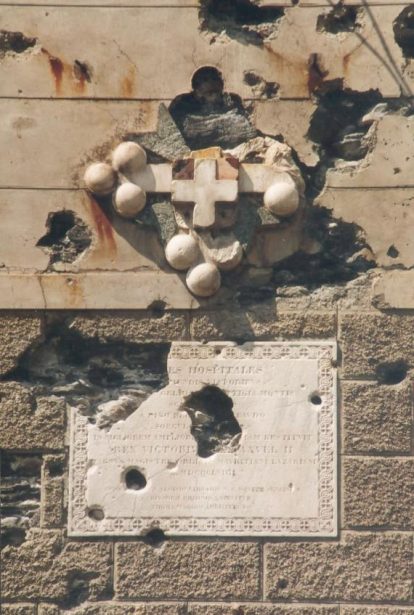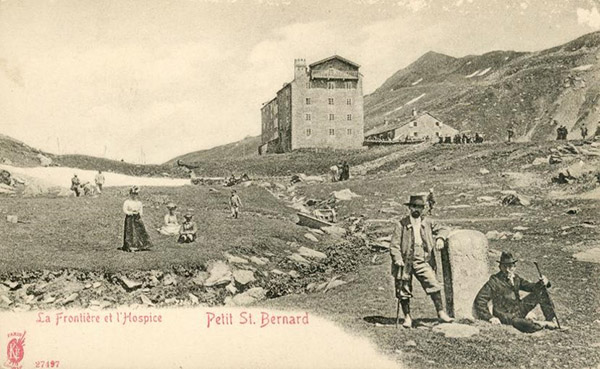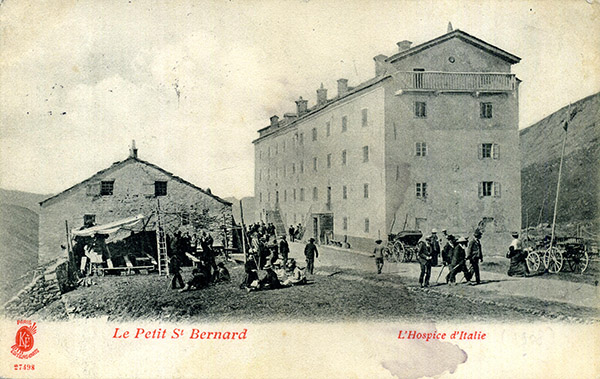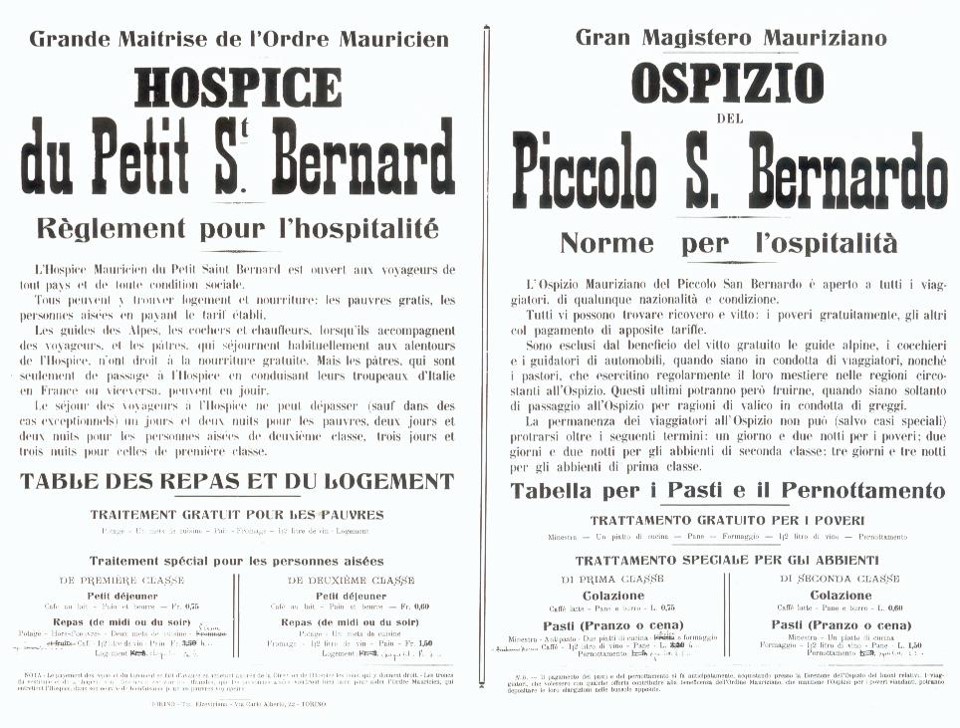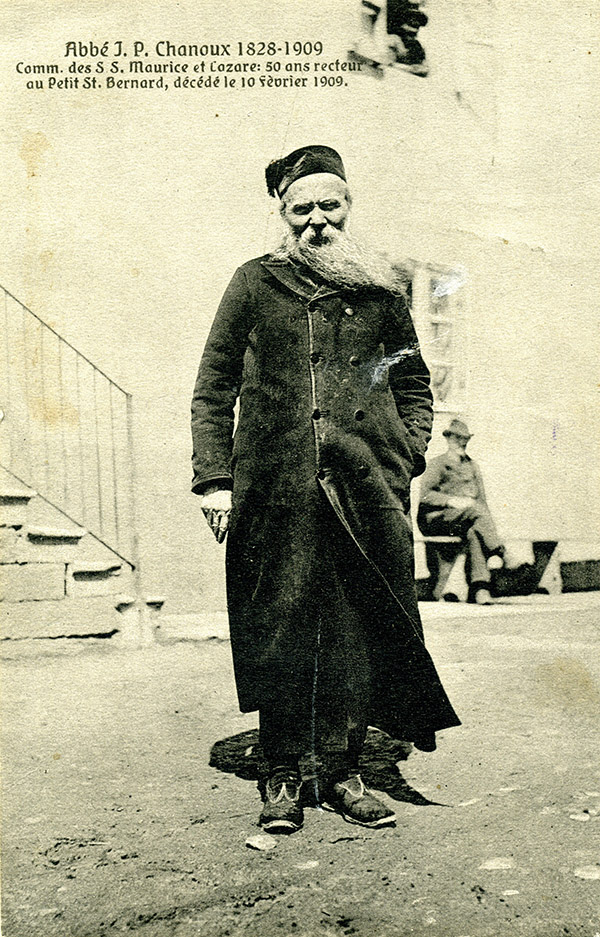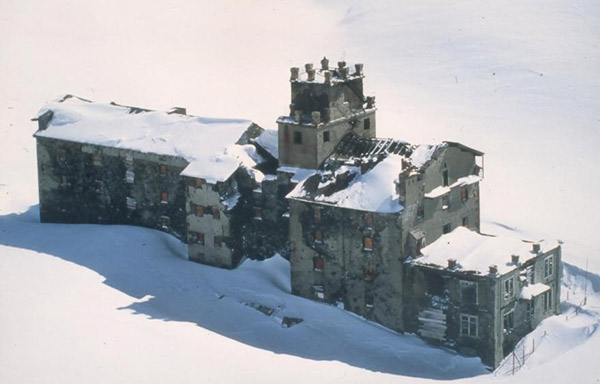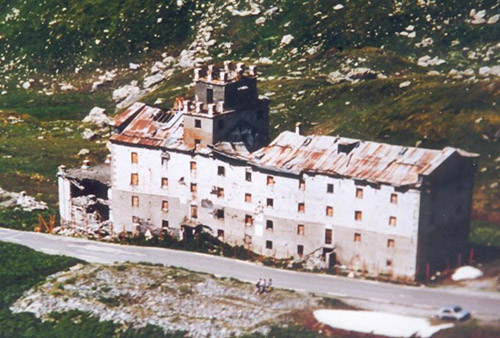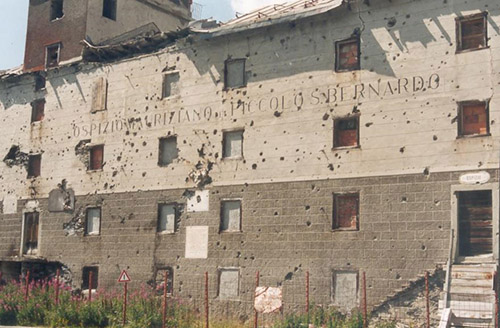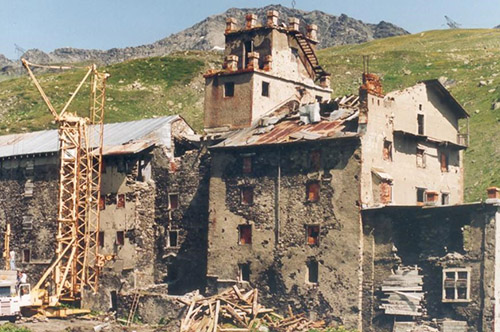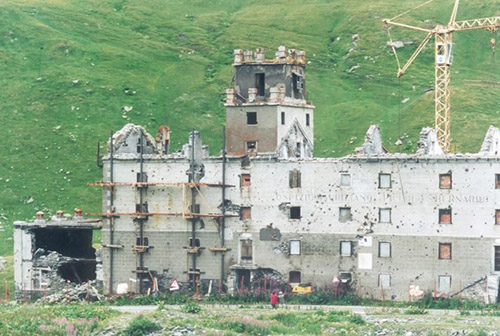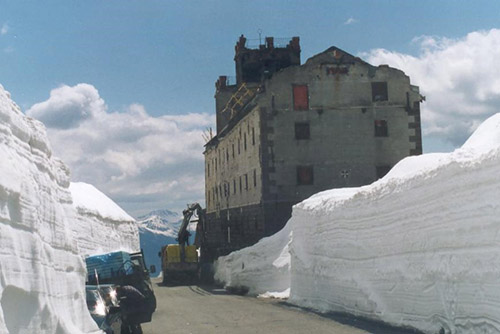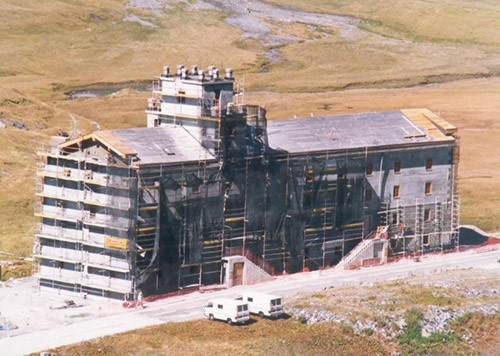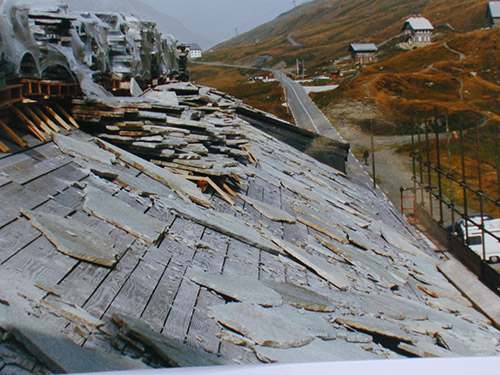
The history of the hospice
Archdeacon Saint Bernard
Saint Bernard, Archdeacon of Aosta, around 1050 would have first established at Mont Jou (former name of the Col du Grand St Bernard), a hospice and a church served by monks dependent on the monastery of St Pierre in Valais. Then, according to legend, he would have founded a new hospice in Colonne-Jou (former name of the Petit St Bernard pass).
Through these constructions, our holy figure re-established security on the 2 great Alpine passes, ensuring hospitality and the service of worship.

The word hospice designates a house of welcome for all the needy who are entitled to room and board.
The Colonne-Jou hospice was entrusted in 1113 to the order of the monks of St Gilles de Verres. However, around this time the building threatened ruin and St Pierre II, Archbishop of Tarentaise, would have abandoned the original building to have another one built 1km further south where it is currently located.
Around 1466 and until 1752, the hospice was united with the provostship of Grand St Bernard, and managed by the Augustinian monks of this pass.
The building was unfortunately ruined several times by French and Spanish troops crossing the pass. Jean Duclos, prior of the church of Séez, activated a remarkable reconstruction after 1691.
The Mauritian Order
After 1752, due to the separation of Valais from Savoy, the order of St Maurice and Lazarus took possession of the building.
Even today, the emblem with the 2 associated crosses replaces on the facades of the building the coat of arms with 2 columns showing that since then, the owner of the place is called the Mauritian order.
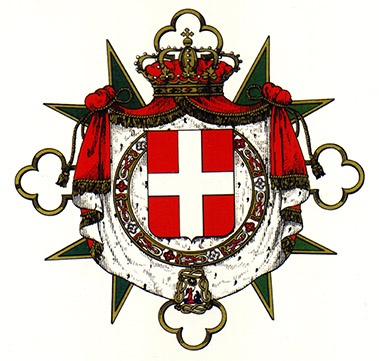
The French Revolution and the Napoleonic occupation again left the hospice in ruins in 1812. of prosperity.
Then the frequentation imposes the enlargement of the construction to bring it in its current volume.
Father Pierre Chanoux, “the angel of the mountain”
In 1860, an emblematic character of the hospice arrived, Abbé Pierre Chanoux, nicknamed the angel of the mountain. He provided hospitality there, summer and winter alike, for 50 years, accompanied by Ruitor, his faithful St Bernard dog.
“The friend of flowers, men and the Alps” also founded an Alpine garden and banned hunting around the pass. He died up there, at the age of 80 in 1909. He rests in the chapel located next to the Alpine garden.
The hospice during the 20th century: ravaged then renovated
In 1920, the hospice broke its attendance record with 21,021 visits, including more than 500 in winter.
The pass was the scene of fierce clashes during World War II, and Rector Camos was forced to leave. The building will be demolished.
A long interlude will then follow, leaving the ruins of the building abandoned in the maze of legal disputes between France and Italy.
In 1982, the ruins became threatening, the mayor of Séez issued a decree of danger giving notice to the owner to demolish this building, causing a stir among the local populations. In 1985, cooperation between the Italian and French Rotary clubs began the beginning of rehabilitation. Fortunately, in 1993, a program to develop the pass, initiated by the local authorities with European funding, allowed the rehabilitation of the building.
This is how since the summer of 1995, renovated and equipped, it has returned to what it was, the soul of the pass!
“The history of the pass shows that there should be no despair: on the ruins caused by the foolishness and selfishness of men, a hospice has always flourished prosperous. Why in this last quarter of the 20th century would we not see a hospice renovated and adapted to new reception emergencies? Men of goodwill have always rebuilt what others have destroyed. Father Hudry


